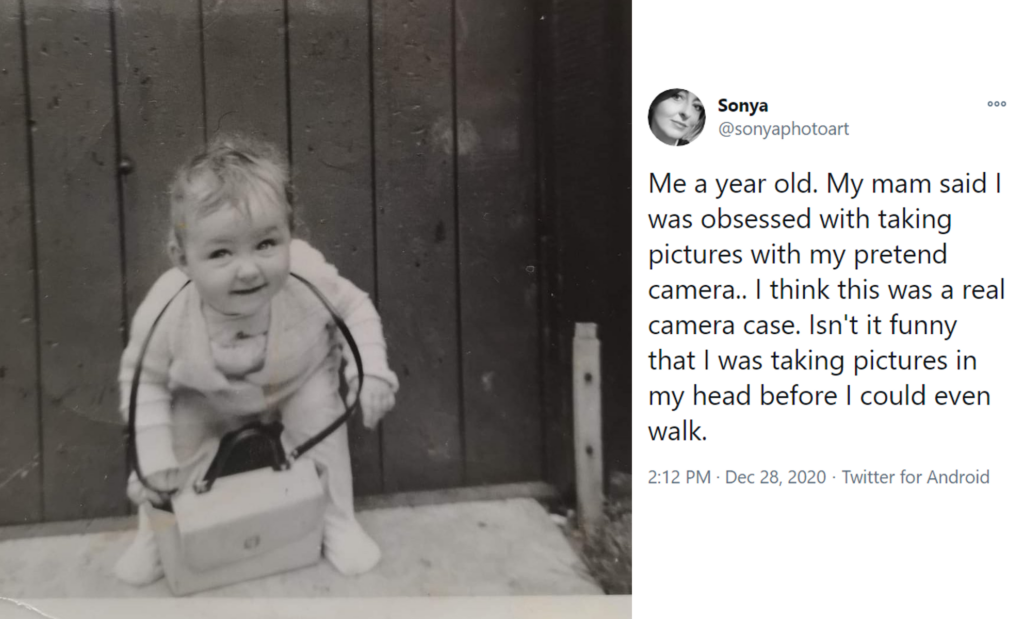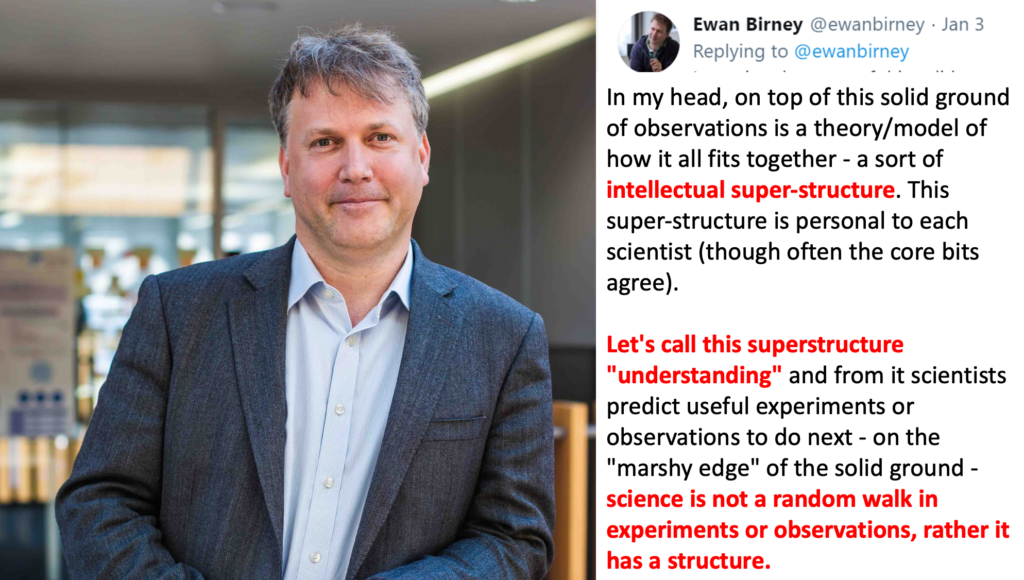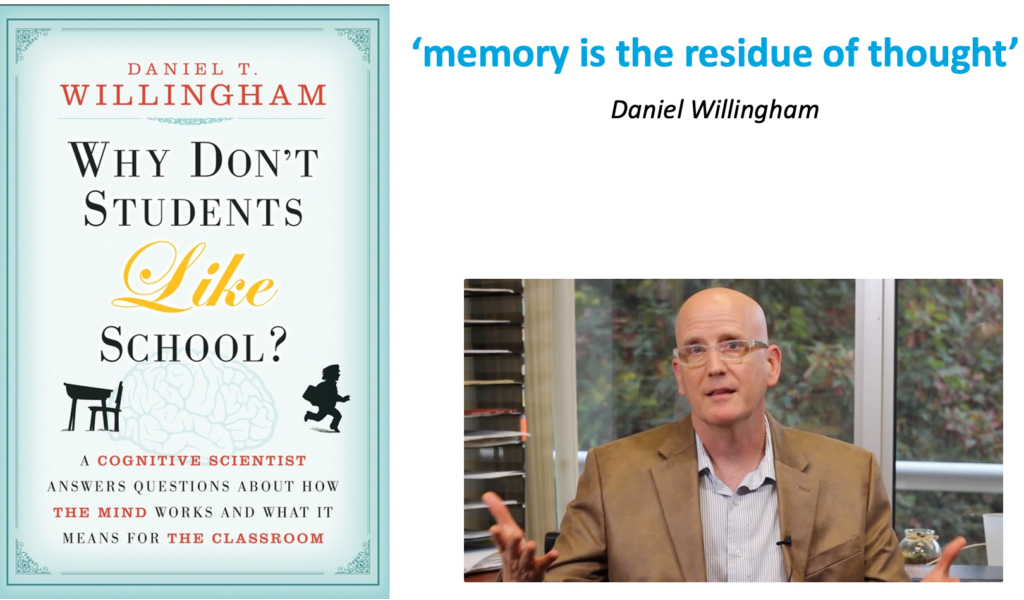Download the presentation of this section.

Here’s a photograph of a photographer that was shared recently on Twitter. As she says, it was when she was very, very little – maybe about 1 year old – and she was carrying a camera case. But the key point is, she says ‘isn’t it funny that I was taking pictures in my head before I could even walk.’ Building schema starts when we are very very young!

Here’s Ewan Birney who’s a famous bio-scientist who’s involved in doing research into vaccines and Covidand so forth. One of the things he comments on is schema, although he doesn’t use those actual words. He calls it an ‘intellectual superstructure’ which is what he uses scientist.
In the second paragraph, he says ‘let’s call this superstructure ‘understanding’ and from it, scientists predict useful experiments or observations to do next – on the “marshy edge” of the solid ground. Science is not a random walk in experiments or observations, rather it has a structure.’

